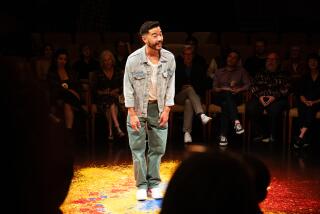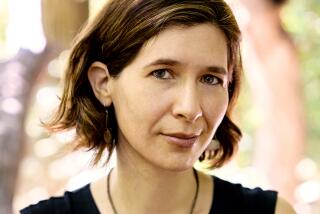Review: Dinah Lenney’s ‘The Object Parade’ on what we keep, hand down
- Share via
“Things — alone and in relation to other things — tell the stories of our lives,” writes Dinah Lenney in her prismatic collection of brief, related essays, “The Object Parade.”
By summoning all manner of physicality — some easily defined (spoon; chandelier) and others more amorphous or symbolic (nests; Dinah’s room; letters to Dad) — the Los Angeles-based writer plumbs the detritus of her life to find meaning or glimpses into a lost time. The resulting pieces are dreamily evocative and lingering at their best, while others slip away, too nebulous to hold.
Some of the strongest pieces tap into anger or other forceful emotions. Lenney recalls her mother’s assessment of her supposed diminishing prime: “‘You have about five good years left,’ she said with eerie objectivity.” Ouch. No wonder this cutting comment comes up twice in the collection. In the wry and frank “Mole,” it’s alluded to during a crisis over whether Lenney should have her eyes done. (Her fretting is understandable: Lenney is not only a well-heeled woman in Los Angeles where such nips and tucks are accepted, if not commonplace; she’s a working character actress, most visibly as Nurse Shirley in “ER.”)
But it’s in “Green Earrings,” one of the standout pieces in the collection, where the comment illuminates a type of power struggle with her mother that roots around the older woman’s earrings, described so beautifully the reader wonders if the jewels are borrowed from a myth: “it flashed: a pale, round star in the lobe of her ear; a circle of stone shot through with light — not emerald, or chartreuse, or aquamarine — a color like no other.”
Lenney’s mother is often painted as a glamorous, confident matriarch — which is why the struggle is even more pronounced: Lenney wants to own the symbols of her mother’s strength. The two butt heads over the transfer of the jewelry but without voicing the issues that are really at the heart of the conflict — age, a woman’s worth, and if her mother, who promised to give Lenney the earrings at age 35, underestimated her own vitality later in life.
Parents living and dead haunt “The Object Parade.” Inherited objects are talismans that conjure our elders and their less tangible gifts, as Lenney explores in “Charlie’s Piano” via the burdensome Steinway from her grandfather, who encouraged her love for music. Now with two grown children of her own, Lenney hasn’t passed down much yet in the way of treasures, but there’s a sense of her teaching a way of life, of a passionate, thinking existence.
“The Object Parade” doesn’t traffic in much outright drama (though “Chicken Stew,” Lenney’s telling of a dinner party gone confrontational is a riot), but it ambitiously reaches for the scope and texture of a life lived — the sweep of time, the dun-colored years we’ve nearly forgotten. At times, Lenney loses the thread, diving so deep into her own thoughts that it’s hard to follow. Perhaps the essays would’ve benefited from breaking out of the author’s life experience and looking at the larger implications of objects in a world clogged with gadgets in landfills or how objects are tied to wealth and privilege in particular.
But Lenney clearly feels most compelled by the stories only she can tell. She follows her vision like a North Star, and her faith is ultimately rewarded. Her stories will stick with you, long after the object of a book has faded.
Wappler is a writer in Los Angeles.
The Object Parade
Dinah Lenney
Counterpoint; 240 pp., $25
More to Read
Sign up for our Book Club newsletter
Get the latest news, events and more from the Los Angeles Times Book Club, and help us get L.A. reading and talking.
You may occasionally receive promotional content from the Los Angeles Times.






